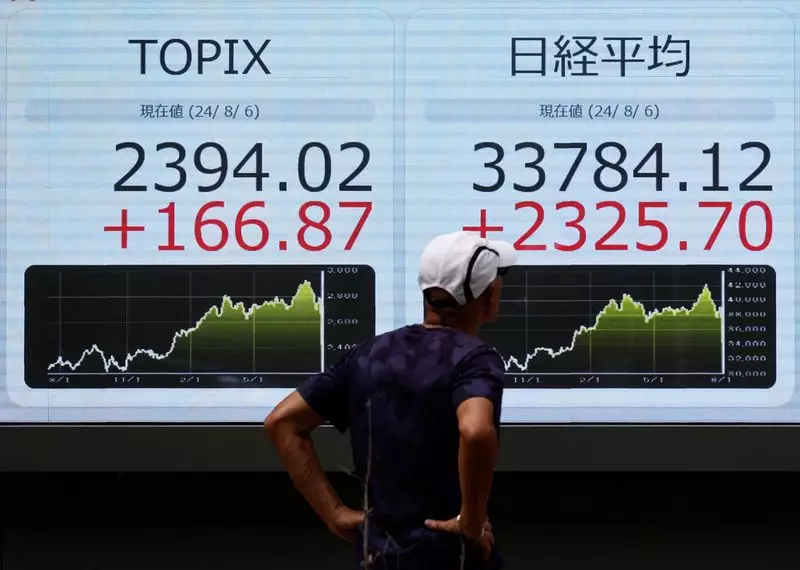On a Tuesday morning in Singapore, Asian stock markets experienced a surge, reaching their highest point in over two months. This upswing can be attributed primarily to optimistic investor sentiment buoyed by the recent U.S. Federal Reserve rate cut. While traders absorbed the implications of these changes, many were also closely monitoring the impending monetary policy decisions from Australia’s central bank. The environment was ripe for a cautious yet hopeful perception in the finance sector, as stakeholders eagerly awaited actionable insights.
China’s financial regulators, including the central bank, took center stage with announcements aimed at stimulating the nation’s sluggish economy. Noteworthy among these measures was a cut in mortgage rates intended for existing homeowners, which analysts believe could provide a needed boost in consumer confidence and spending. Given the broader economic pressures affecting global markets, such interventions reflect China’s urgent need to rekindle growth and mitigate the adverse effects of past downturns. The regenerative measures underscore how critical it is for main economies to support their citizens, particularly in uncertain financial climates.
In Australia, the Reserve Bank (RBA) is expected to maintain its current interest rate stance, indicating a preference for cautious maneuvering amid growing economic uncertainties. Despite some market speculation about possible alignment with the U.S. Federal Reserve’s recent cuts, analysts predict that the RBA will prioritize keeping inflation expectations stable. Charu Chanana, head of currency strategy at Saxo, pointed out that any significant shifts in Australia’s approach may be postponed until their next meeting on November 5, allowing time for additional labor market data and the Q3 Consumer Price Index (CPI) report to inform their decision.
Investor Sentiment and Stock Performance
The steady environment in the markets propelled the MSCI Asia-Pacific Index, excluding Japan, to a minor gain of 0.04%, landing at 586.31 points — a level not achieved since July 15. Japan’s Nikkei led the charge with an impressive leap of 1.69% to nearly hit a three-week high. These developments conveyed a sense of cautious optimism among investors, with many eager to absorb the impact of forthcoming economic narratives, particularly from influential figures like Bank of Japan Governor Kazuo Ueda.
The backdrop of these international market movements includes a significant 50 basis point rate cut orchestrated by the Federal Reserve. Chicago Fed President Austan Goolsbee articulated the rationale behind this decision, emphasizing the importance of creating favorable conditions that support a “soft landing” for the U.S. economy. While some analysts warned that market participants might be overly exuberant regarding potential further cuts from the Fed, it was generally suggested that more robust job data would be essential to revise expectations surrounding future interest rates.
The Strength of the U.S. Dollar and Global Currency Trends
At the forefront of global currency dynamics, the U.S. dollar index floated around 100.95, lingering close to a recent one-year low. Meanwhile, the euro experienced stability at approximately $1.11055 after facing downward pressure due to lackluster economic activity in the eurozone. Australia’s dollar fluctuated slightly, indicating a nuanced response to current market pressures. These currency shifts reflect broader themes of economic health and growth projections, with investors carefully weighing the ramifications of various international monetary policies.
As for commodities, crude oil prices saw minor incremental gains, with Brent futures inching up by 0.26% to settle at $74.09 a barrel. However, the ongoing concerns regarding demand and weak economic indicators from Europe continue to create uncertainties in the commodity markets. These factors collectively underscore the interconnectedness of global economic indicators and the importance of monitoring a plethora of variables that can influence both local and international investment landscapes.
The interplay between central bank decisions, currency fluctuations, and economic stimuli is set against a backdrop of cautious optimism in Asian markets. As investors navigate these complexities, the evolving economic narrative will undoubtedly play a pivotal role in shaping the future landscape for markets across the board.

